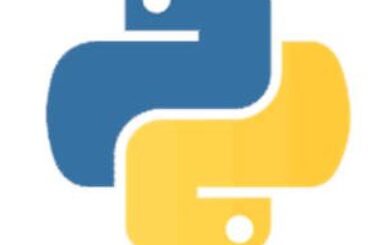How to Apply AI to Small Data Sets?
How to Apply AI to Small Data Sets? Data science and artificial intelligence collaborate to better gather, classify, analyze, and interpret data.
But all we constantly hear about is employing AI to comprehend huge data sets.
This is because individuals can typically understand small data sets, therefore using AI to analyze and interpret them is not necessary.
As more companies and manufacturers use AI in their manufacturing processes, data availability is dwindling.
Furthermore, due to risk, time, and financial constraints, many settings, unlike large corporations, are unable to acquire large amounts of training data.
As a result, AI solutions for small data sets are neglected or used incorrectly.
Machine Learning Impact on your day-to-day life! »
The majority of businesses use AI incorrectly when applying it to tiny data sets in order to generate predictions about the future based on historical data. Unfortunately, this leads to erroneous and dangerous choices.
Therefore, it is crucial to acquire the necessary skills for applying AI to small data sets in order to prevent any misunderstandings.
How to Apply AI to Small Data Sets?
The 5 Proper Methods for Applying AI to Small Data Sets
When used effectively, AI algorithms on small data sets produce findings free of human error and erroneous outcomes.
Additionally, you save the time and resources generally used for manually evaluating small amounts of data.
Following are some strategies for using AI on tiny data sets.
1. Few-Shot Learning
The few-shot learning technique gives AI a limited sample of training data to use as a guide for interpreting brand-new datasets. Because it only needs a few instances for identification, it is a widely used strategy in computer vision.
For instance, financial analysis systems don’t need a big inventory to work well. As a result, you enter a profit and loss statement template in accordance with the system’s capabilities rather than overburdening the AI system with data.
In contrast to other AI systems, this template will produce incorrect results if you provide more information.
The AI system learns the pattern from the training data set when you upload a sample of data, which it will use to analyze future tiny data sets.
The few-shot learning approach has the enticing feature that you can train the AI quickly and cheaply without using a large training data set.
Importance of Data Cleaning in Machine Learning »
2. Knowledge Graphs
By sifting through a large original data collection, the knowledge graphs model produces secondary data sets.
It is used to store connected descriptions and details about things like events, objects, actual circumstances, and theoretical or abstract ideas.
This approach simultaneously encodes semantics underlying the particular data collection in addition to serving as data storage.
The arrangement and structuring of significant data points from the data set to integrate information gathered from multiple sources is the main purpose of the knowledge graphs model.
Labels are added to a knowledge graph to associate certain meanings. Nodes and edges are the two basic parts of a graph. Nodes are made up of two or more objects, and edges show how they are related to one another.
Knowledge graphs can be used to store information, combine data, and change data using a variety of methods to draw attention to new information.
Additionally, they come in handy for arranging small data sets so that they are very reusable and explainable.
Training and Testing Data in Machine Learning »
3. Transfer Learning
Because they are unsure of the outcomes, businesses avoid using AI on limited data sets. The same techniques that generate accurate results for massive data sets also produce inaccurate outcomes.
Despite the vastness of the data set, the transfer learning method produces findings that are comparable and trustworthy.
Transfer learning starts with one AI model and ends up with findings from a different AI model. It’s the process of transferring knowledge from one model to another, to put it briefly.
This paradigm is mostly applied to natively processed languages and computer vision. This is due to the fact that these jobs demand a significant amount of data and computational resources.
Transfer learning reduces the extra time and effort as a result. To use the transfer learning model on little data, the new data set must be comparable to the first training data set.
Remove the neural network’s termination during application and add a fully connected layer corresponding to new data set classes.
Next, randomize the weights of fully connected layers while maintaining the weights of the prior network. Update and train the AI network in accordance with the new operational and fully connected layer at this time.
What are the algorithms used in machine learning? »
4. Self-Supervised Learning
The SSL model, also known as self-supervised learning, collects supervisory signals from the access or training data set. The next step is to forecast the unobserved or concealed data using the information already at hand.
The SSL model is mostly employed for classification and regression analysis activities. In the domains of computer vision, video processing, and robot control, it is also useful for categorizing unlabeled data.
As it constructs and manages the entire process separately, this model has quickly resolved the data labeling difficulty. By doing this, businesses avoid the extra expense and effort associated with developing and implementing various AI models.
The SSL model may be used to produce trustworthy findings regardless of the size of the data set, demonstrating the model’s scalability. Due to its support for upgrades, SSL is also fantastic for enhancing AI capabilities over time.
Additionally, it does away with the necessity for example cases because the AI system develops on its own.
Python is superior to R for writing quality codes »
5. Synthetic Data
An AI algorithm that has been trained on real data sets produced artificially generated data. It is artificially constructed and not based on genuine occurrences, as the name implies.
The ability of synthetic data to predict results is comparable to that of original data. Because it doesn’t employ masking and modification, it can take the place of the initial data forecasts.
When there are gaps in the available data set and it is not possible to replace them with the accumulated data, using synthetic data is excellent.
Moreover, it doesn’t jeopardize user privacy and is less expensive than other AI learning and testing methods. Synthetic data is rapidly gaining ground in a variety of industries as a result, and by the end of 2024, 60% of AI analytic initiatives will use synthetic data.
Because businesses can produce synthetic data to satisfy certain requirements that aren’t met by current data, it is becoming increasingly popular.
As a result, businesses can still get accurate findings by employing AI algorithms to generate synthetic data, even if they are unable to access a data set due to privacy restrictions or if a product is not yet available for testing.
Surprising Things You Can Do With R »
Summary
AI is swiftly developing and replacing humans to make every complicated work simpler. However, the majority of individuals are unaware that they can use AI algorithms.
It is good at organizing and analyzing enormous data, for instance, and also works well with smaller data sets. But in order to get the right outcome, you need to use precise AI techniques and models.
Use the AI models that are described in this article since they are good at producing accurate results from limited data sets.




